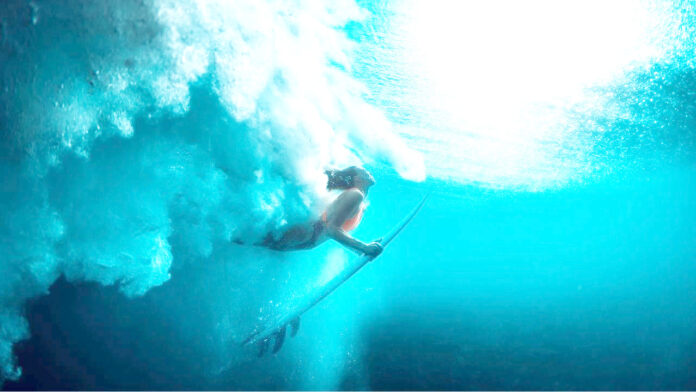Editors Note:
“In our opinion, it is of paramount importance that we create a database of forward thinking brands who have taken it upon themselves to change the face of the surf industry in terms of sustainability. Not only does the future of surfing rely on this new wave, the future of our planet relies on the shift in mindset being demonstrated by companies driven less by profit margins and the bottom line, and more by the opportunity to mitigate decades of environmental abuse.”
Why is it important to see an improved focus on sustainability in the surf industry? Why is it essential for new surf brands to enter the scene, with a redefined focus ? Let’s take a closer look.
Surfing, for all its grounded, earthed, back-to-nature vibes, is, unfortunately, a pursuit that internally battles a toxic footprint. It is a sport where technology just cannot keep up with the mindset of the participants. Surfers are renowned for their love of the ocean, as well as the animals residing in the coastal shallows and deeper regions. Surfers are environmentalists by design; however, we practice a unique level of hypocrisy.
Surfboards
The overwhelming majority of our surfboards are made from petrochemical-based materials, with minimal recycling opportunities. I believe that environmentally friendly boards make up around 10% of global sales.

The CO2 footprint of a typical surfboard, through its manufacture, use, and disposal, is more than 270kg. This is comparable to many of the consumer electronics that are rebuked for their environmental impact.
Wetsuits
Wetsuits have historically been made from oil-based, and more recently, limestone-based neoprene. Both of which have a significant environmental impact and limited recycling/upcycling options.
Accessories
Most surf wax is a bar of chemical sludge. Accessories including traction pads, leashes, and board bags are usually no better, .
Travel
Surfers burn vast quantities of oil-based fuel. We drive to surf spot after surf spot goose chasing for waves. Flying around the world, often numerous times a year, in the pursuit of waves is common. Fume spewing jet skis adorn lineups, offering safety or wave catching assistance.

I feel like Jock Sorong made a fascinating and pertinent point in his Guardian article entitled “Are we trashing the places we love? The toxic truths at the heart of surfing“:
“Surfers burn vast amounts of petroleum in search of waves, in pursuit of an experience which, ironically, requires no propulsive fuel.”
Jock Sorong – The Guardian
Surf Fashion
Surfing is fashionable. Surfers like to identify as surfers. As such, surfwear is mass-produced and shipped globally. Over the years, even identifying as a surfer via the clothes you wear has contributed to the environmental calamity we now face.
In 2018, the fashion industry, which surfwear is a part of, was more impactful on global energy consumption than aviation and shipping combined.
Sustainable Surf puts all the above firmly into perspective:
“The global scientific consensus is clear – we have until 2030 to reduce our collective carbon footprint to avoid passing a catastrophic climate tipping point.”
Sustainable Surf
Surfings Sustainable Future
Let’s take a second to consider that. We are at the beginning of 2022. According to the scientific consensus, we only have eight years to make a significant change.
Wave riding, in its purest form, is not only in touch with nature. It is literally enveloped by nature. In essence, surfing is not a toxic sport. Still, mass participation, surf travel, progression of performance, global competition, fashion, and “the business of surfing” has resulted in impactful, inexcusable levels of harm.
Personal Responsibility
Surfers must take responsibility for their own personal practices. Every surfer can make moves towards reducing their individual impact. It is fantastic to see surfers advocating and partaking in beach cleans, second-hand surfboard up-cycling, and awareness-raising events.

Surfers can also make the decision to purchase long lasting sustainable outdoor clothing rather than throw away fashion items.
Surf Brands
Surf brands must be held to task regarding the processes of equipment manufacture and shipping.
I’m not saying that surf brands currently do nothing to reduce the level of harm. I will, however, say that I personally don’t believe the majority are doing enough, or everything they can, to make the changes required by 2030.
Some initiatives point brands in the right direction. Many research hours have gone into sustainable alternatives, which can replace the impactful materials and processes. The development of plant based Yulex neoprene is changing up the production of wetsuits. Ecoboards are high performance surfboards with reduced toxicity. Organisations are also offering verification standards for fabrics and cloth production processes.

But is enough being done by the established surf brands?
I realise the statement I just made might not sit too well. You guys, I’m sure, lean towards eco-friendly brands and practice sustainability as best you can. I am sure you, as surfers and earth-dwellers, appreciate the efforts being made across the surf industry.
Good On You Ratings
Let me build some context using the fantastic website Good On You. They have created a platform that rates clothing brands based on their environmental impact, scoring out of five the effects a brand has on People, Planet, and Animals.
The “big four,” most established surf brands currently score “Not Doing Enough” or “We Avoid.”
The difficulty is that many of the brands established for years are essentially trying to mitigate their impactful historical practices. This is an expensive turnaround and challenging to communicate to a board of directors whose primary concern is the bottom line. Such companies have pursued the cheapest possible manufacturing processes, thus creating a market expectation regarding recommended retail prices. Announcing that the same logo on a pair of boardshorts with eco credentials is twice the price often goes down like a lead balloon.
The international surf brands that we as surfers consider the most ethical, sustainable, and environmentally aware reach a score of “It’s a Start” or “Good.” This is positive to see, and Outerknown is leading the charge of sustainability for an international brand.
The New Wave of Sustainability
While Outerknown is setting new industry standards, a new batch of start-ups is coming on the scene with their sights firmly established on maximising sustainability. Influenced by the turnaround that Kelly Slater’s flagship company has influenced, these brands are focused on using processes throughout their range that the “not good enough” international brands use for a tiny percentage of their overall production.
While Outerknown and Patagonia lead the way, the future of our sport/planet relies on the next generation of brands coming through in their wake and redefining the surf industry.
The purpose of this page is to introduce you to the new wave of forward thinking brands, blazing their own trails in terms of sustainability.





